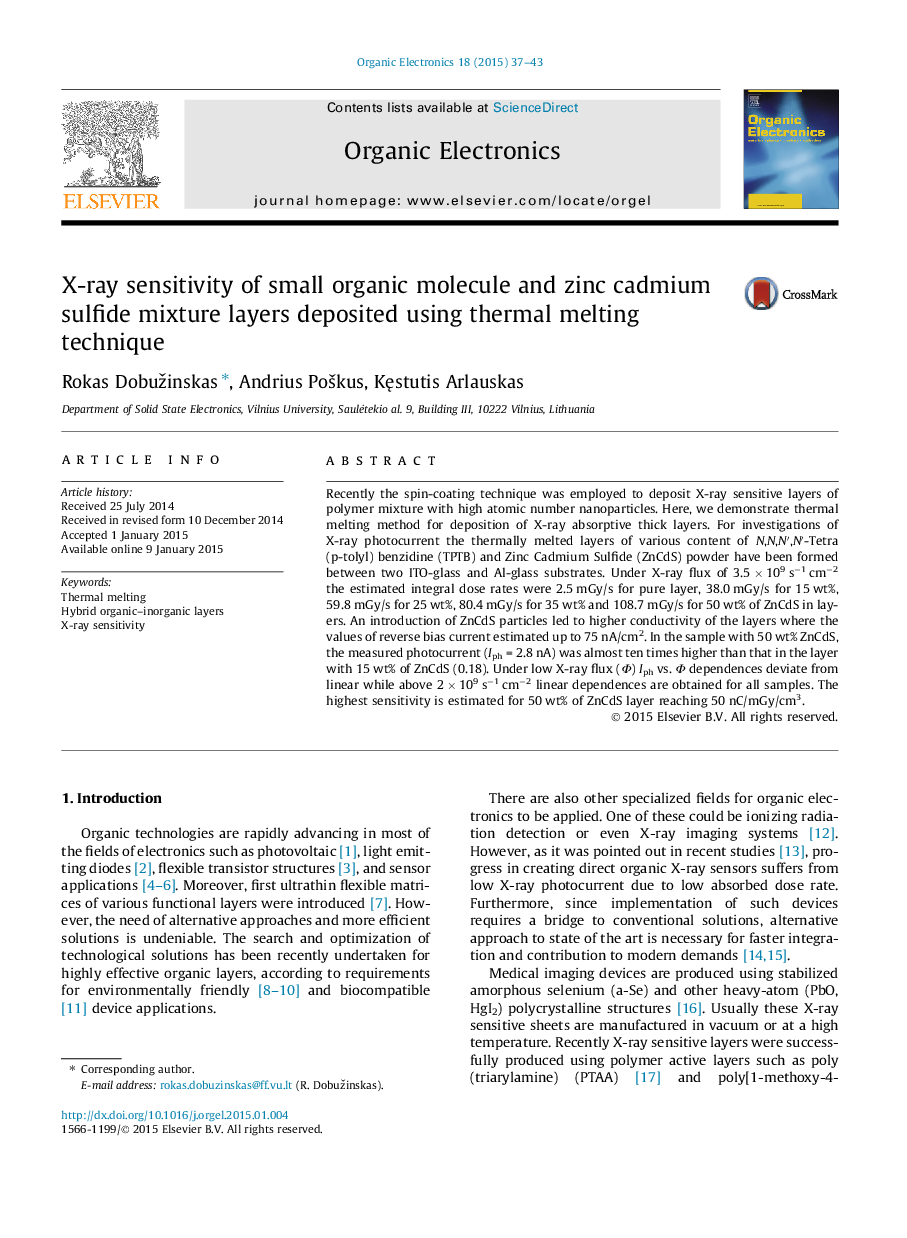| Article ID | Journal | Published Year | Pages | File Type |
|---|---|---|---|---|
| 1267223 | Organic Electronics | 2015 | 7 Pages |
•Mixture layers of organic molecules and ZnCdS were deposited using thermal melting.•Response of I–V characteristic to an X-ray photon flux were measured.•Photocurrent of layers with 50 wt% ZnCdS was ten times higher than in 15 wt% layers.•The highest sensitivity (50 nC/mGy/cm3) was for layers with 50 wt% of ZnCdS.•The photocurrent dependence on X-ray photon flux for mixture layers was linear.
Recently the spin-coating technique was employed to deposit X-ray sensitive layers of polymer mixture with high atomic number nanoparticles. Here, we demonstrate thermal melting method for deposition of X-ray absorptive thick layers. For investigations of X-ray photocurrent the thermally melted layers of various content of N,N,N′,N′-Tetra(p-tolyl) benzidine (TPTB) and Zinc Cadmium Sulfide (ZnCdS) powder have been formed between two ITO-glass and Al-glass substrates. Under X-ray flux of 3.5 × 109 s−1 cm−2 the estimated integral dose rates were 2.5 mGy/s for pure layer, 38.0 mGy/s for 15 wt%, 59.8 mGy/s for 25 wt%, 80.4 mGy/s for 35 wt% and 108.7 mGy/s for 50 wt% of ZnCdS in layers. An introduction of ZnCdS particles led to higher conductivity of the layers where the values of reverse bias current estimated up to 75 nA/cm2. In the sample with 50 wt% ZnCdS, the measured photocurrent (Iph = 2.8 nA) was almost ten times higher than that in the layer with 15 wt% of ZnCdS (0.18). Under low X-ray flux (Φ) Iph vs. Φ dependences deviate from linear while above 2 × 109 s−1 cm−2 linear dependences are obtained for all samples. The highest sensitivity is estimated for 50 wt% of ZnCdS layer reaching 50 nC/mGy/cm3.
Graphical abstractFigure optionsDownload full-size imageDownload as PowerPoint slide
